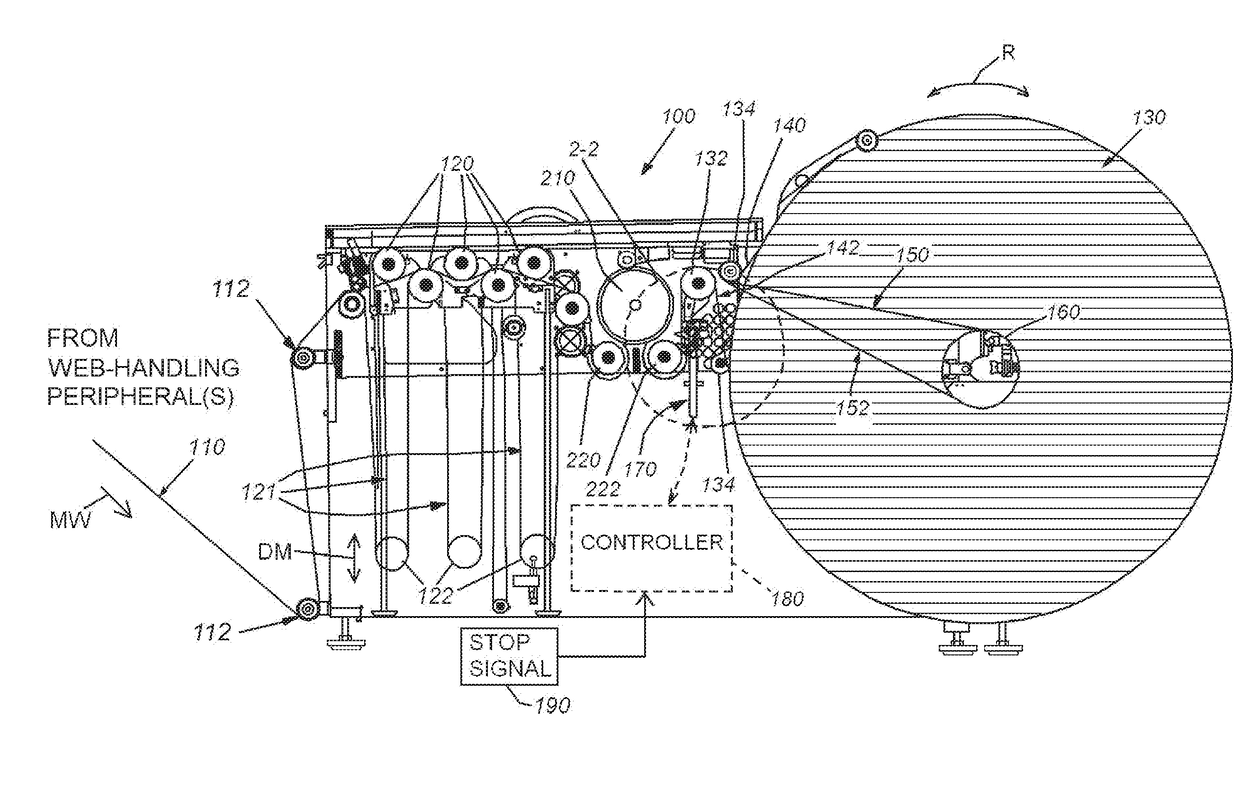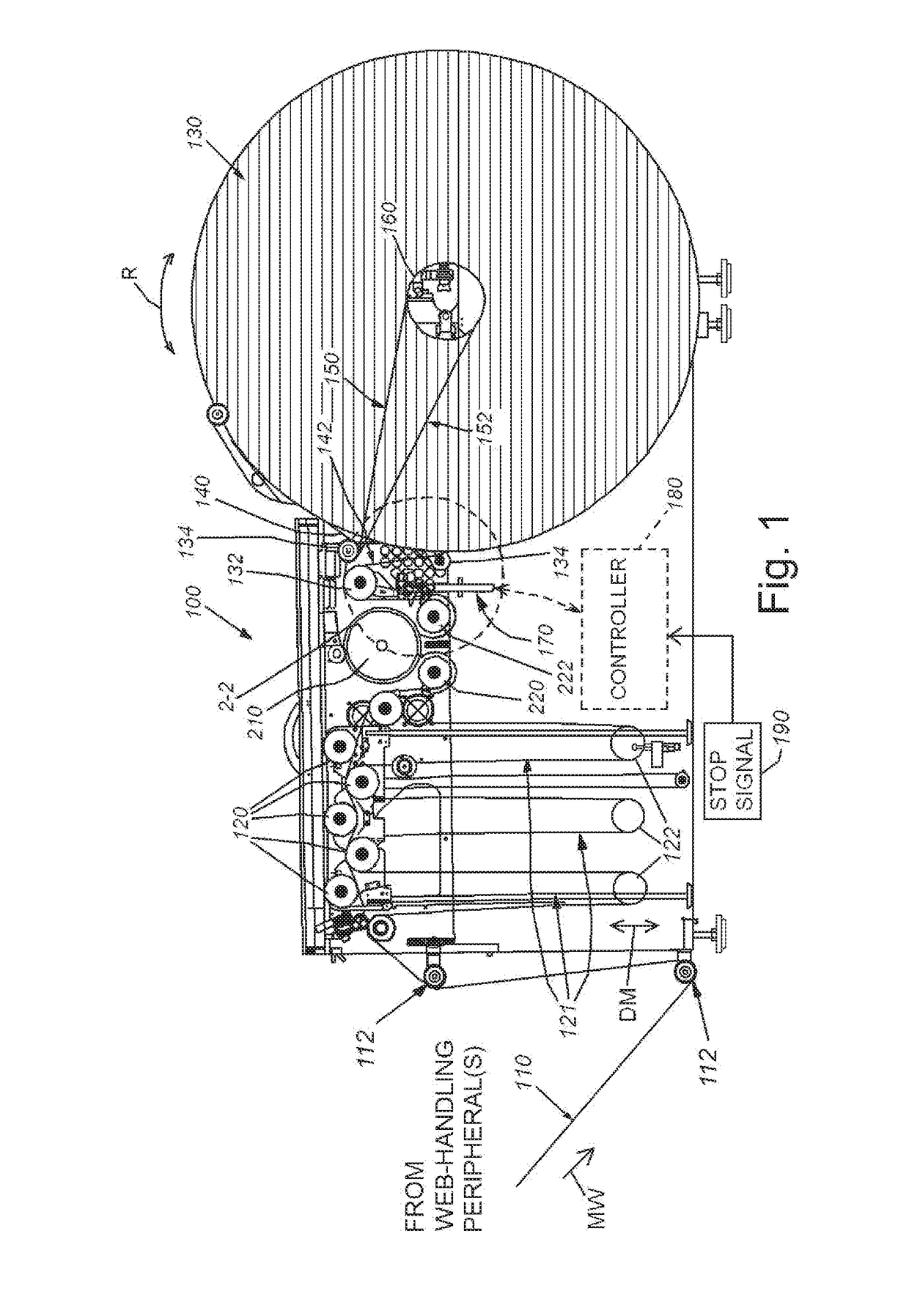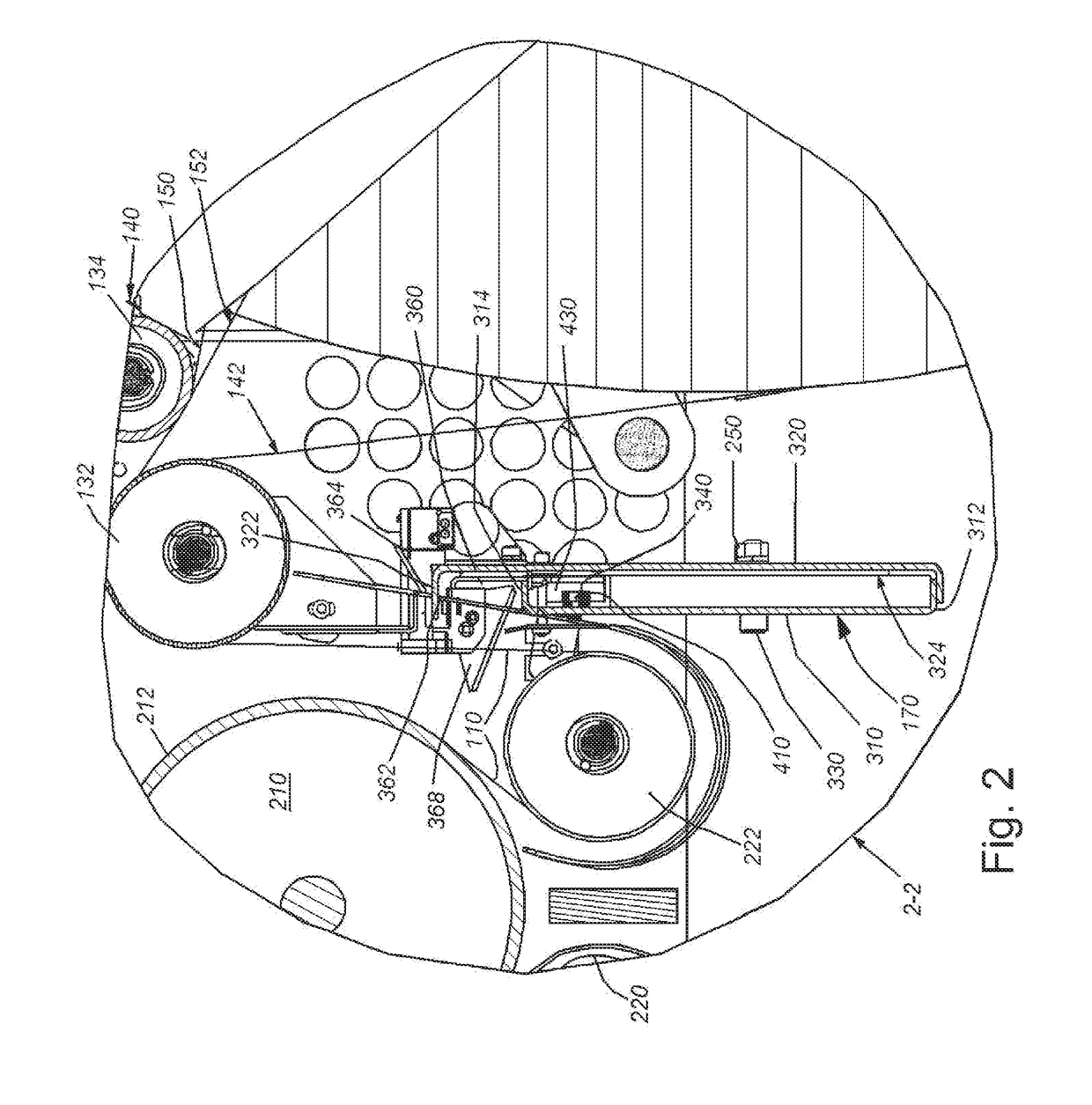Emergency stop cutting mechanism for a web rewinding device
a technology of rewinding device and stop cutting mechanism, which is applied in the direction of thin material handling, metal working apparatus, transportation and packaging, etc., can solve the problems of web impact damage, and achieve the effect of increasing handling safety
- Summary
- Abstract
- Description
- Claims
- Application Information
AI Technical Summary
Benefits of technology
Problems solved by technology
Method used
Image
Examples
Embodiment Construction
[0023]FIG. 1 is an exposed side view of a web winder 100 by way of non-limiting example. The winder 100 is arranged to rewind web 110 that has been processed by an upstream handling / utilization device, such as an electronic printer (not shown). The web moves downstream (motion arrow MW) through the winder 100 from an assembly of idler rollers 112, or other appropriate input arrangement, into a series of rollers 120 within the winder housing that suspend the web into a set of festooned loops 121. The loops 121 are weighted down by corresponding dancer bars or rollers 122 that move upwardly and downwardly (double arrow DM) in to build and take up an accumulated length of web. This accumulated length of web is used to compensate for changes in the rate between web fed into the winder 100 and web taken up by the winder roll 130. The web exits the festoon and passes through a serpentine path to at least one of the input roller(s) 132 and 134 that reside upstream of the roll 130. In an ex...
PUM
 Login to View More
Login to View More Abstract
Description
Claims
Application Information
 Login to View More
Login to View More - R&D
- Intellectual Property
- Life Sciences
- Materials
- Tech Scout
- Unparalleled Data Quality
- Higher Quality Content
- 60% Fewer Hallucinations
Browse by: Latest US Patents, China's latest patents, Technical Efficacy Thesaurus, Application Domain, Technology Topic, Popular Technical Reports.
© 2025 PatSnap. All rights reserved.Legal|Privacy policy|Modern Slavery Act Transparency Statement|Sitemap|About US| Contact US: help@patsnap.com



